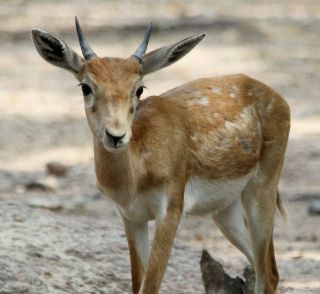Laughter
The Enduring Link Between Laughter and Play
Why feelings of amusement are closely associated with playful interactions.
Posted November 30, 2023 Reviewed by Gary Drevitch
Key points
- The Great Apes and humans express laughter for the same reason, and yet we do so much more frequently.
- We would expect that expressions of mutual vulnerability flourish as shortcomings are highlighted during play.
- Compared to that of our Great Ape cousins, human play is highly diverse and flourishes throughout adulthood.

Earlier posts in this series have dealt with the evolution of laughter as it relates to questions of kind: How we differ from other Great Apes emotionally, cognitively, and socially. Here I address the increase in frequency. Why should it be that we engage in and seek out humor so much more often than orangutans, gorillas, and chimpanzees? In short, why have feelings of amusement come to be so important in our lives?
To explore this, we must first understand the social context in which laughter developed and thrived for most of its 16 million-plus years on the planet: play.
Play
Humans have been compelled by the processes of natural selection to cope with a wide range of challenges. And yet, while the capacity to overcome obstacles is inborn, specific solutions are not. Those we learn. We have the hand, arm, and shoulder structure that permits throwing a spear, for example, but require practice to throw it far and accurately. The same is true of controlling an emotion, expressing a thought, assessing a risk, and making new friends. We have tremendous potential, but realizing it is the result of a process of discovery, often referred to as play—an activity in which virtually all mammals engage.
How might we define play? For all practical purposes, it can be described as the exercise of life-sustaining skills under a presumption of reduced costs and benefits. Individuals engaging in play do so with an understanding that the outcomes of their actions will result in neither the full cost (assuming failure) nor the full benefit (assuming success) as they would in normal circumstances (Martin, 1984; Smith and Simon, 1984). To illustrate this more concretely, let’s look at two simple examples of play in nonhumans.
Play in Other Mammals
Gazelles have the genetically-determined capacity to run swiftly; it’s their primary means of escaping predators. Honing this ability, however, takes time and effort. Young gazelles begin to develop their running skills soon after they join the larger herd, usually within a few days of their birth. When other members are relaxed—when there are no signs of imminent danger—the young often find a little open space to run. They blast off in a sprint, make a succession of sharp turns, race off again or maybe jump in the air a few times, and then rejoin their kin.

We each intuitively recognize this as play behavior. It’s quite obviously the sort of thing adult gazelles must do well to survive. Additionally, because the full cost of running slowly or turning ineptly was not part of the equation—absent predators in a position to capitalize on these shortcomings—we can say that the costs of failure were reduced. They’re not necessarily eliminated; running does take valuable energy reserves and a gazelle can injure itself if it trips over a loose rock or sideswipes a sharp branch, but they’re certainly reduced.
Suppose, on the other hand, that we saw the same action undertaken by that same young gazelle, and it appeared to be acting with the full knowledge that a leopard was stalking or pursuing it. We would obviously no longer consider it play. The consequences of slowness or poor agility would be as high as they could be: The young gazelle would be running for its life.
The same process happens on the other side of such a contest. Young predators exercise capture and killing techniques, and when they do so with a presumption of reduced costs and benefits, we label it play behavior. A leopard cub pouncing on its mother’s tail or running down and tackling a littermate develops critical motor skills, but doesn’t fill its stomach. It develops these life-sustaining skills under the assumption of reduced costs and benefits because its mother is still responsible for its caloric needs.
Must individuals engaging in play methodically calculate the exact cost/benefit ratio? Do they need to be fully aware of all the skills they will need as adults in order to be successful in life? The answer to both questions is “no." Just as the capacity for running and chasing is inborn, so is the knack for knowing when to play. Natural selection favors young who instinctively appreciate not only the sorts of play behaviors that are most beneficial, but also the best times to engage in them.
There are nonphysical aspects of play as well (Burghardt, 1984). Young mammals practice emotional expression and control, develop sensory and information-processing abilities, and improve needed social skills. They increase their core competencies and gauge the abilities of others with whom they will both cooperate and compete.
In many play situations, however, there’s also some inherent potential for harm or embarrassment. When two or more participants join in play sessions, we often find their skill levels to be unequal. This makes sense. The best way to pick up new skills, and refine the ones you already have, is to match yourself with those more advanced than you (Parker, 1984). However, because members of a group are, to some extent, also competing with each other for resources, there may be a cost incurred when developing the skills of a cohort.
Thus, when individuals, especially those having dissimilar skill levels, engage with each other, there will be some means to convey that they’re just “playing." Such play signals, which include laughter in humans and apes, permit individuals to momentarily gain or lose status relative to their playmates without significant changes to either party’s established position within the actual social hierarchy.
Play in Humans
Today, in our complex and crowded modern societies, human play—taking physical, cognitive, emotional, and social forms—has become a lifelong pursuit. It became much more frequent and extended much further into adulthood than what we observed in our forest cousins. It’s no wonder laughter is so often called upon to help maintain group cohesiveness and harmony as we develop the multitude of competencies needed to succeed.
© John Charles Simon.
References
Burghardt, G. M. 1984. On the Origins of Play. In. P. K. Smith (Ed.), Play in Animals and Humans. New York: Basil Blackwell [citing Bekoff, M. and Byers. 1981. A Critical Reanalysis of the Ontogeny and Phylogeny of Mammalian Social and Locomotor Play: An Ethological Hornet’s Nest. In. K. Immelmann, G. W. Barlow, L. Petrinovich and M. Main. (Eds.), Behavioral Development. The Beielefeld Interdisciplinary Project. Cambridge: Cambridge UP].
Martin, P. 1984. The (Four) Whys and Wherefores of Play in Cats: A Review of Functional, Evolutionary, Developmental and Causal Issues. In P. K. Smith (Ed.), Play in Animals and Humans. New York: Basil Blackwell.
Parker, S. T. 1984. Playing for Keeps: An Evolutionary Perspective on Human Games. In. P. K. Smith (Ed.), Play in Animals and Humans. New York: Basil Blackwell.
Simon, J. C. (2008). Why We Laugh: A New Understanding. Starbrook Publishing.
Smith, P. K. 1982. Does play matter? Functional and Evolutionary Aspects of Animal and Human Play. Behavioral and Brain Sciences 5: 139 – 155.
Smith, P. K. and T. Simon. 1984. Object Play, Problem-solving and Creativity in Children. In. P. K. Smith (Ed.), Play in Animals and Humans. New York: Basil Blackwell [citing Bruner, J. S. 1972. The Nature and Uses of Immaturity. American Psychologist 27: 687 – 708].




